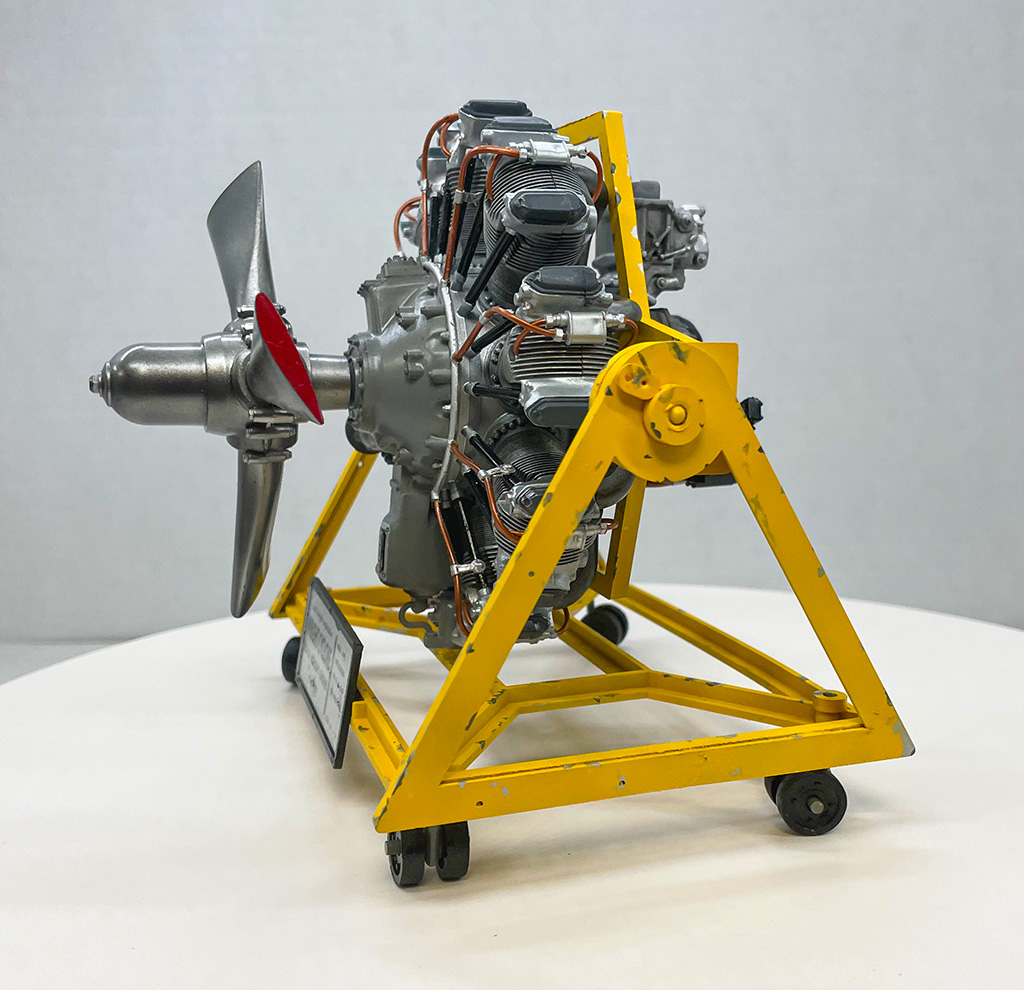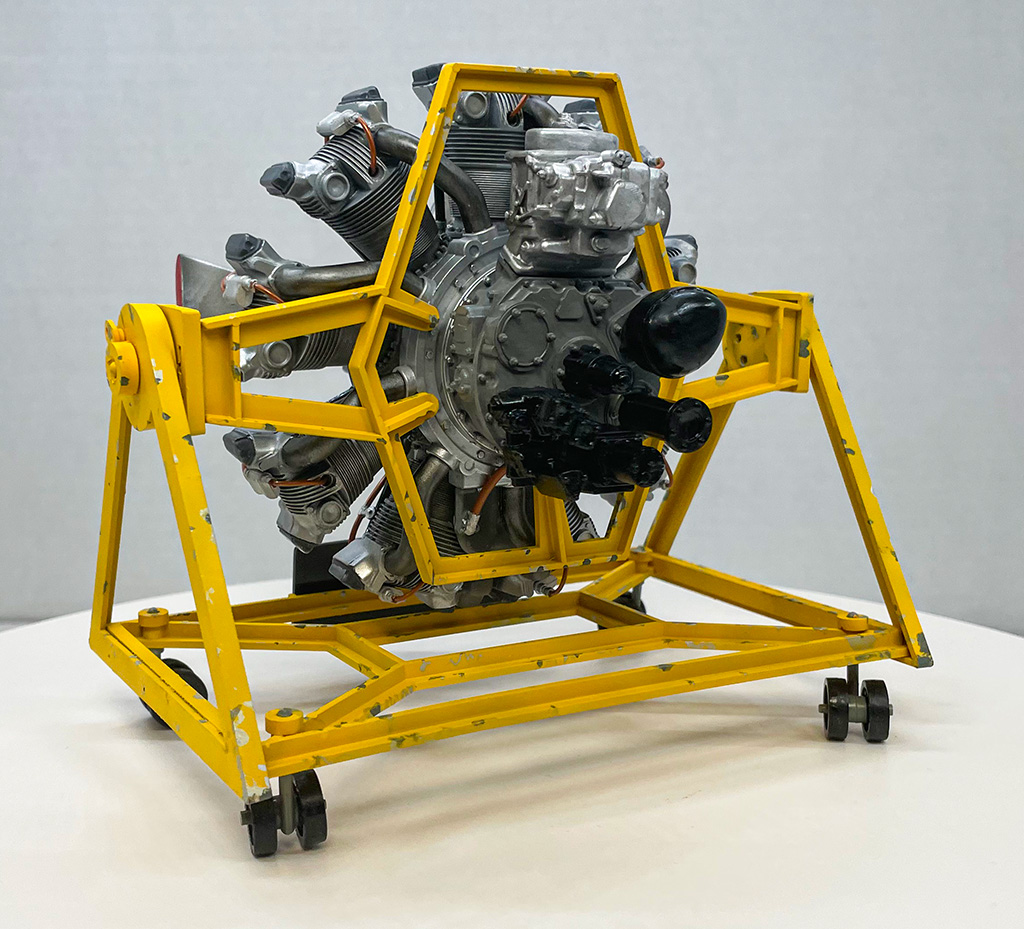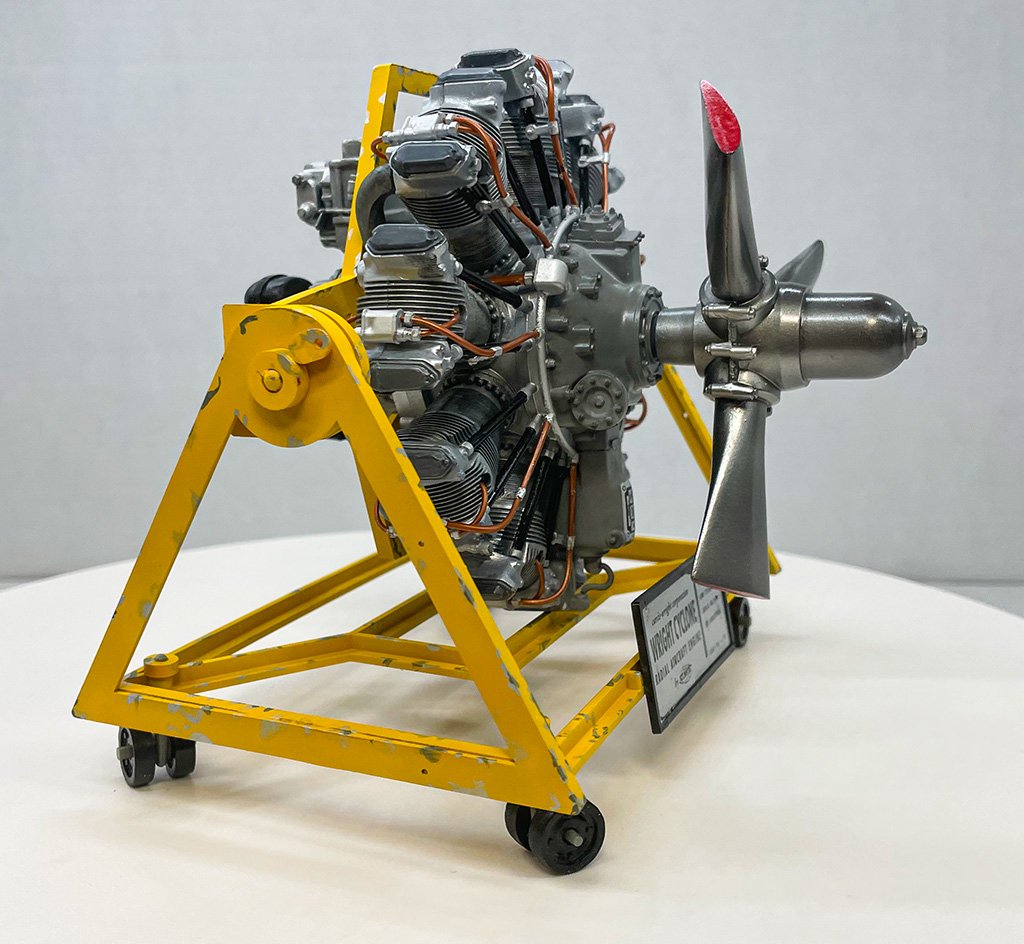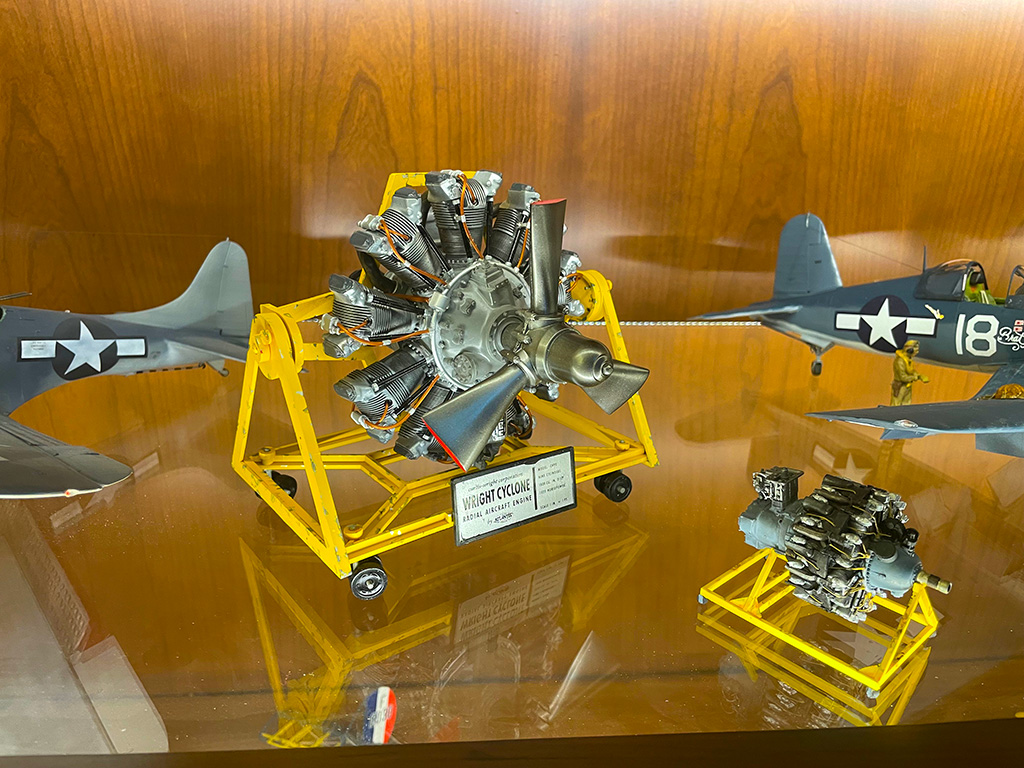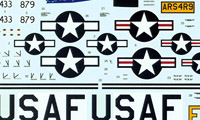4/28/2023 This is my finished 1/12 scale model of the Wright Cyclone radial engine by Atlantis. This C9HE model of the Wright Cyclone was first issued in 1959 from Monogram, and was really advanced for a model kit at that time. It shows it's age today, but still builds into a very nice model. I had a lot of fun building it and the results to me are very satisfactory. I weather the engine a little with Tamiya black panel line ink and also painted the engine stand yellow and weratherd that too. I opted not to include the cut away cylinder showing the piston as I thought it looked a little cheesy. The ignition cables and two additional pipes are made up of flexible plastic material and will not allow paint to stick to them. I therefore had to leave them in their original copper color. I was able to paint the ignition cable fittings silver tho.
Here is some background on the engine:
The Wright R-1820 Cyclone 9 is an American radial engine developed by Curtiss-Wright, widely used on aircraft in the 1930s through 1950s. It was produced under license in France as the Hispano-Suiza 9V or Hispano-Wright 9V, and in the Soviet Union as the Shvetsov M-25.
Design and development
The R-1820 Cyclone 9 represented a further development of the Wright P-2 engine dating back to 1925. Featuring a greater displacement and a host of improvements, the R-1820 entered production in 1931. The engine remained in production well into the 1950s.
The R-1820 was built under license by Lycoming, Pratt & Whitney Canada, and also, during World War II, by the Studebaker Corporation. The Soviet Union had purchased a license for the design, and the Shvetsov OKB was formed to metricate the American specification powerplant for Soviet government-factory production as the M-25, with the R-1820's general design features used by the Shvetsov design bureau for many of their future radials for the Soviet air forces through the 1940s and onwards. In Spain the R-1820 was license-built as the Hispano-Suiza 9V or Hispano-Wright 9V.[2]
The R-1820 was at the heart of many famous aircraft including early Douglas airliners (the prototype DC-1, the DC-2, the first civil versions of the DC-3, and the limited-production DC-5), every wartime example of the Boeing B-17 Flying Fortress and Douglas SBD Dauntless bombers, the early versions of the Polikarpov I-16 fighter (as the M-25), and the Piasecki H-21 helicopter.
The R-1820 also found limited use in armored vehicles. The G-200 variant developed 900 hp (670 kW) at 2,300 rpm and powered the strictly experimental M6 Heavy Tank.
To view a video of the finished model go HERE.
Here are some photos of the finished model:




